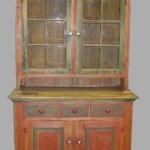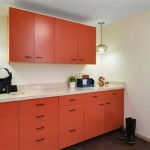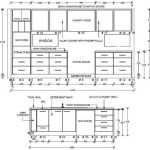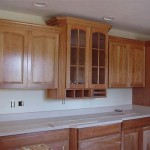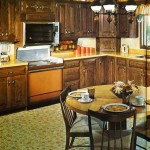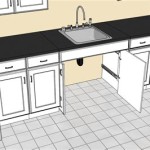Adjusting A Kitchen Carousel: A Comprehensive Guide
The kitchen carousel, often referred to as a lazy Susan, is a revolving storage unit designed to maximize space and accessibility in kitchen cabinets, particularly corner cabinets. These rotating shelves allow easy access to items stored deep within the cabinet, preventing items from being lost or forgotten. However, over time, kitchen carousels can become misaligned, wobbly, or difficult to rotate smoothly. This article provides a comprehensive guide to diagnosing and adjusting various types of kitchen carousels, ensuring optimal functionality and extending their lifespan.
A properly functioning kitchen carousel should rotate smoothly and quietly, maintain a level position, and securely hold items without wobbling. When these characteristics are compromised, adjustment is required. The specific adjustment methods vary depending on the type of carousel installed. Common types include full-round carousels, pie-cut carousels, and kidney-shaped carousels. Regardless of the design, the underlying principles of alignment, leveling, and securing the rotating mechanism remain consistent.
Identifying Common Problems and Their Causes
Before attempting any adjustments, it is crucial to identify the specific problem affecting the kitchen carousel. Common issues include wobbling, sticking, uneven rotation, and overall misalignment. Each of these problems typically stems from a specific underlying cause.
Wobbling is often caused by loose mounting hardware. The screws or bolts that secure the carousel's supporting structure to the cabinet walls or floor may have loosened over time due to vibrations or weight fluctuations. Another cause could be damage to the bearing or support structure, such as a cracked base or bent frame. Overloading the carousel with excessive weight, especially unevenly distributed weight, can also contribute to wobbling.
Sticking can result from several factors. Debris, such as food particles or accumulated dust, can interfere with the smooth rotation of the bearing mechanism. Misalignment of the carousel shelves or the central support pole can cause friction and resistance. In some cases, the bearing itself may be worn or damaged, requiring replacement. Additionally, interference from items placed too close to the cabinet door or frame can impede rotation.
Uneven rotation, where the carousel rotates more easily in one direction than the other, suggests an imbalance or obstruction. This can be caused by uneven weight distribution on the shelves, with heavier items concentrated on one side. Misalignment of the bearing or supporting structure can also contribute to uneven rotation. In instances where the carousel is mounted on an inclined surface, gravity can also affect the rotation.
Overall misalignment refers to a situation where the carousel is noticeably off-center or tilted within the cabinet. This can be caused by loose or damaged mounting hardware, a warped cabinet structure, or improper initial installation. Misalignment can lead to a variety of problems, including sticking, wobbling, and difficulty closing the cabinet door.
Step-by-Step Adjustment Procedures
Once the problem has been identified, the appropriate adjustment procedure can be implemented. The following steps provide a general framework for adjusting kitchen carousels, although specific steps may vary based on the carousel's design and the nature of the problem. Safety precautions, such as wearing appropriate eye protection and using stable ladders if necessary, should be observed.
Step 1: Empty the Carousel. Remove all items from the carousel shelves to allow for unobstructed access to the supporting structure and rotating mechanism. This also reduces the weight, making it easier to manipulate and adjust the carousel. Note the original placement of items to ensure balanced weight distribution upon reassembly.
Step 2: Inspect the Mounting Hardware. Carefully inspect all screws, bolts, and brackets that secure the carousel to the cabinet. Tighten any loose hardware using an appropriate screwdriver or wrench. If any hardware is damaged or stripped, replace it with identical or equivalent components. It's also helpful to check for corrosion or rust, which can weaken the hardware.
Step 3: Check the Bearing Mechanism. The bearing mechanism is the central component that allows the carousel to rotate. Inspect the bearing for any signs of damage, such as cracks, dents, or excessive wear. Clean the bearing with a dry cloth to remove any debris or accumulated grime. If the bearing is noticeably damaged or worn, replacement may be necessary. Some bearings can be lubricated with a small amount of silicone-based lubricant to improve rotation. Avoid using oil-based lubricants, as they can attract dust and debris.
Step 4: Leveling Adjustments. Use a level to check the carousel's horizontal alignment. If the carousel is not level, shims can be used to raise or lower specific sections. Thin pieces of wood or plastic can be inserted under the supporting structure to achieve a level position. Ensure that the shims are securely placed and do not interfere with the rotation of the carousel. For carousels with adjustable feet, these can be used to fine-tune the leveling.
Step 5: Realigning the Rotating Mechanism. If the carousel is misaligned, carefully adjust the position of the central support pole or the rotating shelves. Loosen the mounting hardware slightly to allow for movement and then gently reposition the components until they are properly aligned. Ensure that the shelves are evenly spaced and do not rub against the cabinet walls or door. Once the desired alignment is achieved, tighten the mounting hardware securely.
Step 6: Addressing Sticking Issues. If the carousel is sticking, meticulously examine the rotating mechanism for any obstructions. Remove any debris or foreign objects that may be interfering with the rotation. Check for rubbing between the shelves and the cabinet walls or door. If rubbing is present, slightly adjust the position of the shelves or door to create sufficient clearance. Lubricating the bearing mechanism can also help to reduce friction and improve rotation.
Step 7: Testing and Refinement. After completing the adjustments, test the carousel by rotating it slowly and observing its movement. Check for any signs of wobbling, sticking, or uneven rotation. Make any necessary refinements to the adjustments until the carousel rotates smoothly and quietly. Pay attention to the weight distribution as items are placed back on the carousel; uneven weight can quickly undo delicate adjustments.
Advanced Troubleshooting and Repairs
In some cases, the problems affecting the kitchen carousel may be more complex and require more advanced troubleshooting and repair techniques. This section covers some of these advanced scenarios.
Replacing the Bearing Mechanism. If the bearing mechanism is severely damaged or worn, replacement is often the most effective solution. To replace the bearing, first identify the type of bearing used in the carousel. Common types include ball bearings, roller bearings, and plain bearings. Purchase a replacement bearing that is identical to the original in terms of size, type, and load capacity. Carefully remove the old bearing, clean the bearing housing, and install the new bearing according to the manufacturer's instructions. Lubricate the new bearing before reinstalling the carousel shelves.
Repairing Damaged Support Structures. If the supporting structure of the carousel is damaged, such as a cracked base or bent frame, repair or replacement may be necessary. Small cracks can sometimes be repaired with epoxy resin or structural adhesive. However, for more severe damage, replacement of the affected component or the entire carousel may be required. When repairing or replacing support structures, ensure that the new components are compatible with the existing cabinet and carousel system.
Addressing Cabinet Issues. Sometimes, the problem lies not with the carousel itself, but with the cabinet in which it is installed. Warped cabinet walls, uneven floors, or misaligned door hinges can all affect the performance of the carousel. In these cases, addressing the underlying cabinet issues is essential. This may involve shimming the cabinet to level it, adjusting the door hinges to ensure proper alignment, or reinforcing the cabinet walls to prevent warping.
Professional Assistance. If the complexity of the repair exceeds one's skill level or if the problem persists despite repeated attempts at adjustment, seeking professional assistance from a qualified handyman or carpenter is advisable. These professionals have the expertise and tools necessary to diagnose and repair a wide range of kitchen carousel problems, ensuring a safe and effective solution.
Preventative Maintenance for Longevity
Regular preventative maintenance can significantly extend the lifespan of a kitchen carousel and prevent many common problems from occurring. Simple maintenance routines, such as cleaning, lubricating, and inspecting the carousel, can help to keep it functioning smoothly and reliably.
Regular Cleaning. Periodically clean the carousel shelves and the surrounding cabinet interior to remove any accumulated debris or spills. Wipe down the shelves with a damp cloth and mild detergent. Use a vacuum cleaner or brush to remove dust and crumbs from the cabinet corners. Avoid using abrasive cleaners, as they can damage the carousel's finish.
Lubrication. Lubricate the bearing mechanism at least once a year using a silicone-based lubricant. Apply a small amount of lubricant to the bearing and rotate the carousel to distribute the lubricant evenly. Avoid over-lubricating, as this can attract dust and debris. Wipe away any excess lubricant with a clean cloth.
Weight Management. Avoid overloading the carousel shelves with excessive weight. Distribute the weight evenly across the shelves to prevent imbalance and strain on the supporting structure. Store heavier items on the lower shelves to maintain stability.
Regular Inspection. Periodically inspect the carousel for any signs of damage, such as loose hardware, cracks, or warping. Address any issues promptly to prevent them from escalating into more serious problems. Tighten any loose screws or bolts, repair any minor damage, and replace any worn or damaged components. Regular inspection allows for the early detection and correction of potential problems, minimizing the need for more extensive repairs in the future.

How To Install Kitchen Carousel Shelvo Diy Tutorial

How To Adjust A Kitchen Corner Cabinet

How To Adjust A Kitchen Corner Cabinet

How To Organise The Kitchen Corner Cabinet Arova

Kitchen Space Organizers Swivel Carousels

How To Install An Hafele Kitchen Carousel

Corner Cabinets With A Carousel

S Carousel Soft Close Left Right Kitchen Hardware Hardwyn

Three Quarter Circle Carousel Fitting Corner Cabinet With At HÄfele

Easy Ways To Adjust A Lazy Susan Shelves Doors More
Related Posts

